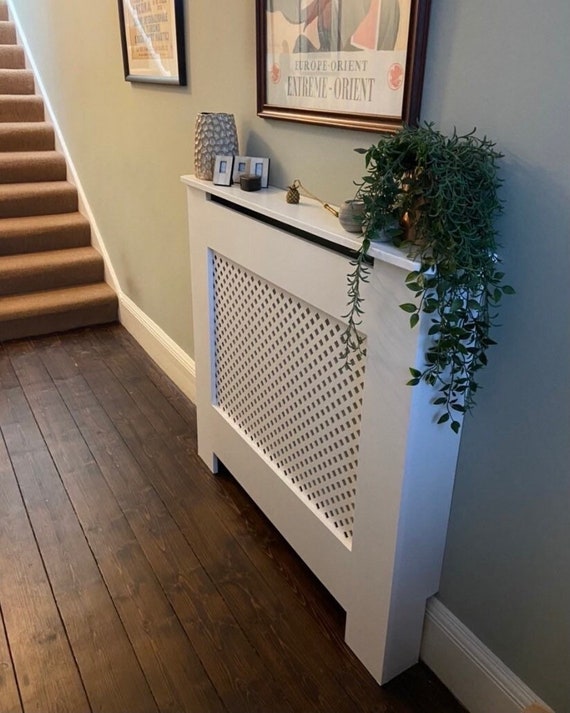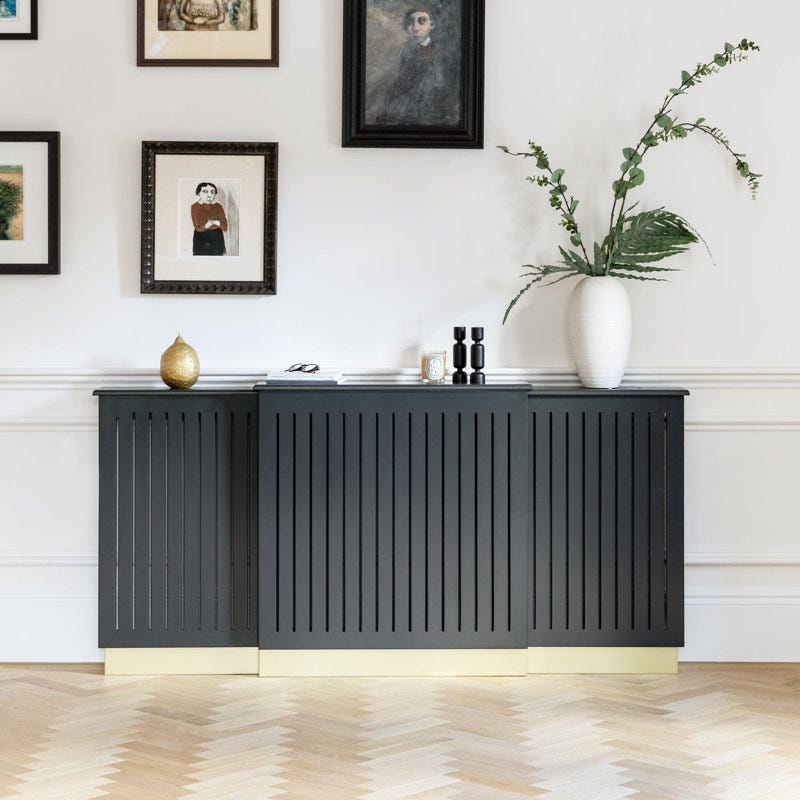Leading Benefits of Installing a Radiator Cover in your house
Radiator Covers: Comprehending Products, Layouts, and Benefits
Radiator covers offer both functional and aesthetic objectives within a home, providing a series of materials such as hardwood, metal, and MDF to match numerous design preferences. As designs evolveâEUR" from typical to contemporaryâEUR" these covers not only improve the visual allure of a room yet also add to safety and security and power effectiveness. However, choosing the appropriate radiator cover includes understanding the nuances of products, styles, and their linked advantages. This expedition elevates crucial questions concerning just how these components integrate into your living environment and what factors to consider ought to assist your option process.
Sorts Of Products


Wooden covers, frequently crafted from woods such as oak or maple, give a classic, cozy look that matches typical interiors. Their durability and capability to be discolored or painted contribute to their adaptability. Metal covers, usually made from steel or light weight aluminum, are preferred for their effectiveness and modern-day look, commonly featuring sleek lines that improve contemporary spaces.
MDF, a manufactured timber item, is popular for its cost-effectiveness and convenience of personalization. It can be painted or completed to match existing design while using a smooth surface. Plastic covers, while much less usual, are resistant and lightweight to dampness, making them ideal for moist atmospheres.
Inevitably, the choice of product for a radiator cover must line up with the homeowner's design choices, practical needs, and the particular atmosphere where the cover will certainly be installed. Each material uses an unique personality, making sure that there is an alternative to suit every taste and setting.
Popular Design Styles
Emphasizing visual allure, preferred layout styles for radiator covers show a variety of tastes and interior layout fads. Typical layouts often feature detailed woodwork and luxuriant outlining, making them appropriate for traditional or vintage-inspired insides. These covers commonly incorporate carved components, offering a cozy and inviting feel to any kind of space.
In contrast, modern layouts concentrate on minimal appearances, identified by clean lines and understated style. Products such as metal or streamlined timber with a smooth surface are commonly made use of, enabling these covers to blend flawlessly into modern rooms. Industrial styles, on the various other hand, accept resources like revealed metal and concrete, including a bold declaration to loft space or metropolitan settings.
For those seeking an one-of-a-kind touch, bespoke styles supply personalization alternatives that accommodate specific choices, allowing home owners to select shades, patterns, and products that complement their decoration. Additionally, farmhouse-style covers integrate rustic aspects, including distressed wood and basic kinds that evoke a comfortable, nation beauty.
Benefits of Radiator Covers
Radiator covers not only improve the visual allure of a room however additionally offer several sensible advantages that make them a worthwhile addition to any type of home. Among the key advantages is safety, especially in houses with children or animals. Covers decrease the threat of burns from warm radiator surface areas, ensuring a much safer environment.
In addition, radiator covers can boost power efficiency. By directing warmth right into the area instead of permitting it to escape, they help keep a regular temperature level, reducing heating prices over time. This is especially advantageous in older homes where radiator systems may be less efficient.
Another notable advantage is sound decrease. Radiators can occasionally create unwanted noises during procedure, and covers can assist stifle these noises, contributing to a much more calm space. Moreover, radiator covers can be practical, providing additional storage space or screen room, thereby optimizing the energy of often-overlooked locations.
Finally, they can protect radiators from dirt and debris, which can prevent effectiveness and increase upkeep requirements. With these combined advantages, radiator covers become a useful solution for boosting both the functionality and design of any type of home setting.
Installment Considerations
Mounting radiator covers needs mindful consideration to ensure both capability and security (Radiator cover). Initially, assess the measurements of your radiator and the surrounding space to make sure a proper fit. Exact dimensions are vital; an ill-fitting cover can obstruct warmth flow or produce safety and security risks
Following, evaluate the material of the cover. While timber offers aesthetic appeal, steel options may give better longevity and heat resistance. Take into consideration the weight of the cover as well; heavier covers may call for added support or reinforcements to avoid sagging or damages with time.
Ventilation is another important facet. Covers must feature appropriate air movement to prevent overheating and preserve reliable heating. Search for styles with slats or openings that permit warmth to flow without blockage.
Additionally, ensure that the cover is securely installed to this website stop crashes, specifically in homes with children or animals. Radiator cover. It's a good idea to adhere to the supplier's installment standards very closely and, if essential, speak with a professional for complex installations
Maintenance and Care Tips
Proper maintenance of radiator covers is vital for ensuring their long life and optimum efficiency. Routine cleaning is vital; dust and debris can build up, obstructing air flow and minimizing warm efficiency. Use a soft, damp cloth or a microfiber duster to delicately clean the surface area, preventing severe chemicals that may harm the finish. For painted or timber covers, think about an appropriate polish or safety layer to preserve Radiator cover their appearance.
Evaluate the covers regularly for signs of wear or damages, such as cracks or peeling off paint. Dealing with these issues without delay can avoid further damage. Guarantee that the covers are firmly secured and examine for any type of loosened screws or fittings, as resonances from the radiator can loosen them in time.
In colder months, stay clear of putting hefty objects or attractive items in addition to the radiator covers, as this can impede warm circulation and trigger unneeded stress to the framework. Lastly, think about seasonal upkeep by eliminating the covers for thorough cleaning and examination during warmer months when the furnace is non-active. Embracing these straightforward care suggestions will certainly boost the performance and aesthetic charm of your radiator covers, guaranteeing they offer their purpose successfully for several years to come.

Conclusion
In recap, radiator covers offer as practical and visual enhancements to household spaces. Cautious factor to consider of installment and maintenance additional makes certain the longevity and efficiency of radiator covers in any kind of home environment.
Radiator covers serve both practical and visual purposes within a home, using an array of materials such as steel, mdf, and wood to suit different style choices. Selecting visite site the appropriate radiator cover entails understanding the nuances of materials, styles, and their connected benefits.Highlighting visual charm, preferred layout styles for radiator covers mirror an array of preferences and indoor layout patterns.Radiator covers not just boost the visual charm of a space however likewise provide a number of functional advantages that make them a rewarding addition to any home. Consider the weight of the cover as well; heavier covers may require additional assistance or reinforcements to avoid sagging or damage over time.